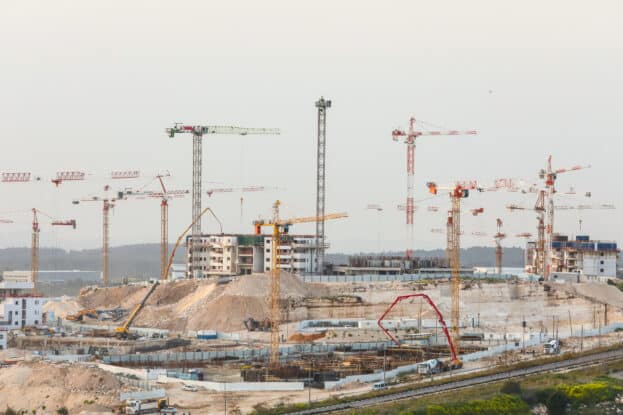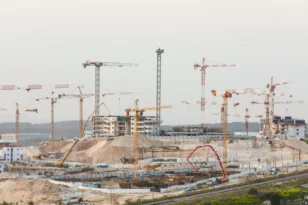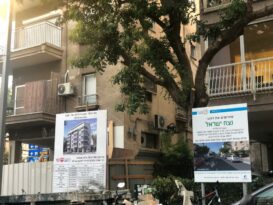Astoundingly, one of the most serious economic crises in Israel’s history has led to the staggering growth of the residential property market, which has seen high sales volume and price increases. On the other hand, all supply indices – construction starts, land purchases, and approval of new plans, have fallen by tens of percent, which indicates the continued trend of price increases in the foreseeable future. Covid-19 and the Israeli housing market – a year that took the world by storm.
In mid-2020, while the entire world was deep in the Covid-19 crisis with no end in sight, there were many in Israel who expected to see a decline in home prices, including the Central Bank, which published such an assessment in an economic report issued in July.
They had every reason to estimate that this would happen: While thousands of apartments were under construction, an unprecedented wave of unemployment put a large proportion of the workforce on forced leave; hundreds of businesses were shuttered; and the public was trying to reduce spending and certainly not looking for long-term financial commitments, threatening the value of homes.
What happened in practice was exactly the opposite. After the initial shock, homebuyers returned to the market and the mortgage banks at the end of May, purchased apartments in even larger quantities than they did in 2019, and moved the entire market into a state of steady price increases, alongside fears of a shortage of supply.
The following is a summary of the effects of Covid-19 on the Israeli housing market, brought to you by Buyitinisrael.
1. Home prices increased by 4% in 2020
According to the Home Price Index published monthly by the Central Bureau of Statistics (CBS), following the outbreak of the crisis, there was a stagnation in sales and in home prices, between March and September, and then during the last quarter of 2020 sales, and thus prices, began to increase. Overall, there was an annual increase in prices of just over two percent, and of approximately four percent during the last quarter alone.
At first, the situation seems unsounded — home prices on the rise precisely at a time when many Israelis are suffering an economic blow however there are a number of explanations for this outcome.
- According to studies carried out so far, the main sectors in which the crisis in Israel hit were the younger and weaker populations, that is, the sectors whose real estate purchasing capacity was limited in the first place.
- The return of investors to the market, mainly due to Finance Minister Yisrael Katz’s decision in July 2020 to reduce the minimum Purchase Tax rate from 8% to 5%.
- The expectation of a decline in the supply of homes in the near future, which we will discuss later.
2. 15% increase in the sale of new homes
One of the most unexpected data extracted during the Covid-19 era on residential property was in the new construction market. During March and April, when the first lockdown was imposed, historical lows were recorded, however, immediately thereafter, sales reached record figures in the three months of May, June, and July — significantly higher than those of 2019 — as was the case in almost every one of the months that followed.
In total, 38,500 new apartments were sold in Israel in 2020, which is about 15% higher than in 2019 when only 33,431 apartments were sold.
3. All-time high in mortgage requests since Covid-19 outbreak
The sharp increase in home purchases was facilitated to a large extent by the mortgage banks. With regards to mortgages too, contrary to economic logic, records were broken. During 2020, the Israeli public took out NIS 78 billion in mortgages, an all-time record, and around 16.5% higher than the previous record set only in 2019, when homebuyers took mortgages totaling NIS 67 billion.
4. 20% decrease in new construction starts
While the demand side was hardly impacted by the Covid-19 crisis, on the supply side, there has been a dramatic effect that could potentially lead to a dearth of apartments in future years. The most important figure in this area is the number of apartments under construction, published quarterly by the Central Bureau of Statistics.
According to the data published thus far, during the six months between April and September 2020, there were only 21,500 construction starts, approximately 20% lower than the corresponding period in 2019, when more than 26,500 new starts were recorded, indicating a sharp decline in construction volumes.
5. Land sold for development was cut in half
The Israel Land Authority (ILA), which operates under the Ministry of Housing, is effectively the “land bank” of Israel, influencing the supply of residential land and through it the supply of apartments. Between 2015 and 2019, as the government battled to keep home prices down, the Authority, under the administration of Finance Minister Moshe Kahlon, tried to flood the market with land. During these years, land for the construction of an average of 40,000 apartments each year was sold to developers.
However, since the outbreak of the coronavirus crisis, the ILA has suffered a severe blow, and has almost completely ceased to function. The Authority completed the first three quarters of 2020 with land marketed for only 5,600 apartments, almost entirely in high-density construction – less than 15% of all marketing in 2019.
In the last quarter of the year, the ILA tried to compensate with the publication of dozens of land tenders for the construction of tens of thousands of apartments, however, market estimates are that much of the land offered is not suitable or attractive to developers. In total, marketing of land was reduced in 2020 by around 50%.
6. Fewer building plans approved in the Central Region
Summary figures show that during 2020, the planning institutions approved plans for the construction of only 95,000 housing units – a decrease of 32% compared to 140,000 units approved in 2019 — the lowest figure since 2014.
In addition, most of the approved plans were in the periphery area – where demand for housing is less. In contrast, in the densely populated central region, which includes Tel Aviv and its surrounding cities, only about 8,000 units were granted building permits, compared with an annual target of 15,000 units.
It is important to note that the reduction in building permits will have no immediate impact on the supply of residential apartments, as opposed to the data on construction starts. However, the low 2020 figures are likely to have a medium- to long-term impact on the supply of land earmarked for construction in the coming years, and the effects of this year should be sensed by the real estate market in the next three to four years.
In conclusion, while the Coronavirus crisis has barely affected the level of demand for apartments, and strangely may have even contributed to its growth, the level of supply has been dealt a severe blow. This impact is likely to have significant implications in the future, in the form of continued increases in home prices in Israel in the coming years.







